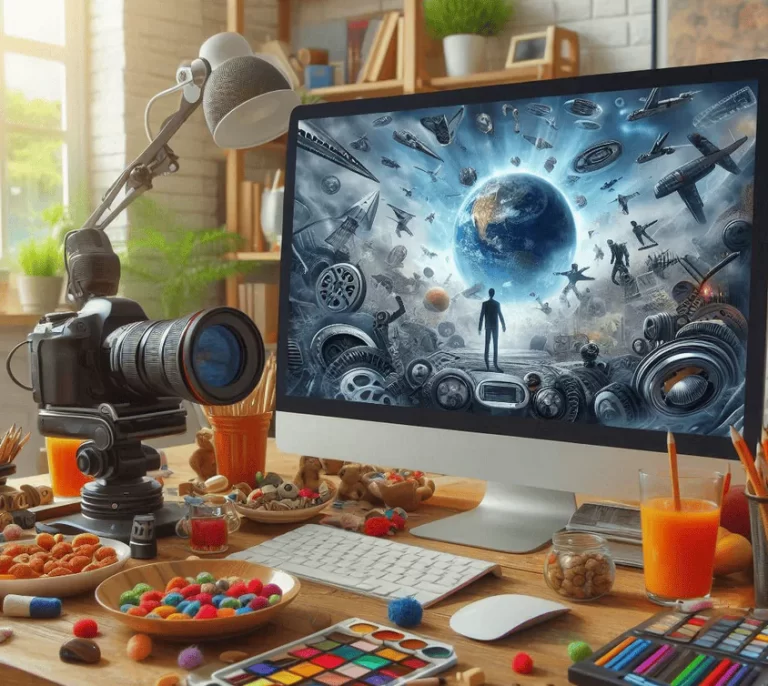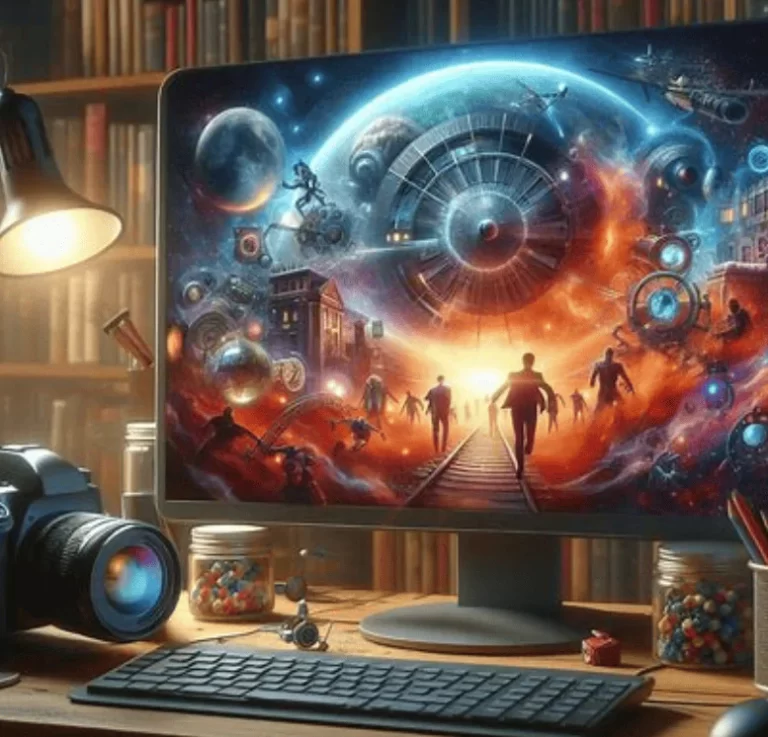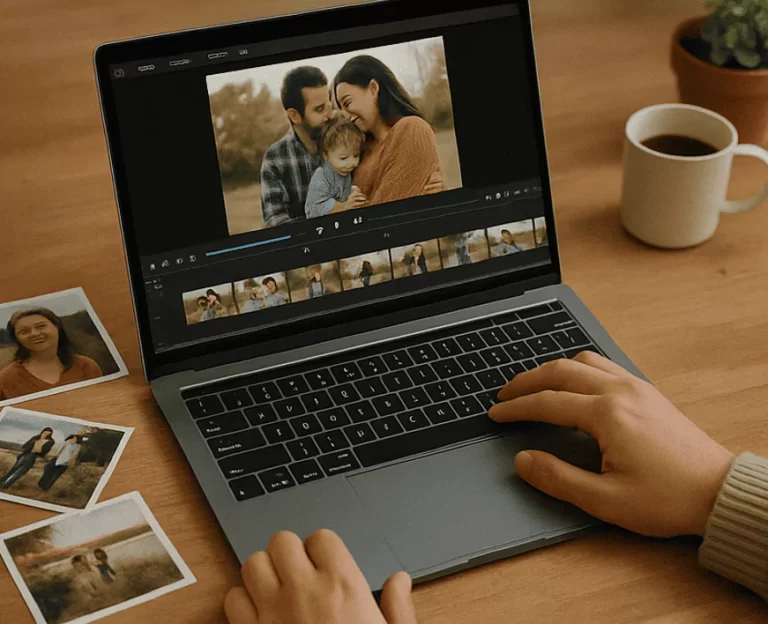
Digital Art The evolution of digital art is a tale of innovation, creativity, and boundless potential. From its early days as a niche experiment to its current status as a dominant force in the artistic world, digital art has continuously redefined the parameters of human creativity. This journey, spanning decades, bridges technology and artistic expression, creating a medium that thrives on imagination, adaptability, and the power of pixels.
The Origins of Digital Art
The roots of digital art date back to the mid-20th century, when computers were first introduced as tools for artistic exploration. The pioneering efforts of figures like Frieder Nake, Vera Molnar, and A. Michael Noll demonstrated how algorithms could be used to generate intricate patterns and compositions. These early creations, though rudimentary by today’s standards, challenged traditional notions of art and hinted at a future where machines and human creativity could coexist.
The 1980s marked a turning point with the advent of personal computers and graphics software. Programs like Adobe Photoshop and CorelDRAW gave artists unprecedented control over their work, allowing them to manipulate pixels, textures, and colors with ease. The medium was no longer confined to experimental labs; it had entered homes, studios, and classrooms.
The Characteristics of Digital Art
What makes digital art unique is its malleability and adaptability. Unlike traditional mediums such as oil paints or clay, it exists in a purely virtual space. This means it can be endlessly revised, scaled, and repurposed without losing its original integrity. Artists working in this medium are not constrained by the permanence of their materials, giving them the freedom to experiment and iterate.
Moreover, digital art blurs the line between the creator and the audience. Interactive installations and augmented reality experiences invite viewers to engage directly with the work, transforming them from passive spectators into active participants. This interactivity is a hallmark of digital art, fostering a deeper connection between the artwork and its audience.
Another defining feature is its versatility in display. Unlike traditional art, which relies on physical spaces like galleries or museums, digital art can exist across multiple platforms. It can be viewed on screens, projected onto buildings, or experienced through virtual reality headsets. This ubiquity allows it to reach a global audience with unprecedented immediacy.
Tools of the Trade
The rise of digital art owes much to the tools and technologies that support it. Graphic tablets, styluses, and software like Procreate and Adobe Illustrator have become essential for modern artists. These tools mimic the tactile experience of traditional media while offering features that enhance precision and creativity.
Artificial intelligence (AI) has also emerged as a game-changer. AI-driven tools like DeepArt and DALL·E can generate images based on textual descriptions, opening up new avenues for exploration. While some purists argue that such tools diminish the role of the artist, others view them as collaborators, augmenting human creativity rather than replacing it.
Virtual reality (VR) and augmented reality (AR) are further pushing the boundaries of digital art. Artists can now create immersive environments that envelop viewers, offering experiences that transcend the limitations of the physical world. Sculpting in VR, for instance, allows creators to manipulate three-dimensional spaces with their hands, forging connections between the real and the virtual.
The Impact of Digital Art on Society
The influence of digital art extends beyond the realm of aesthetics. It has permeated industries such as entertainment, education, and marketing, becoming a cornerstone of modern visual culture.
Entertainment and Media
In the entertainment sector, digital art is the backbone of video games, movies, and animated content. Studios like Pixar and DreamWorks have set benchmarks for storytelling through computer-generated imagery (CGI). The lifelike characters, detailed landscapes, and dynamic animations seen in modern cinema owe their existence to the evolution of digital art.
Video games, too, have become a showcase for artistic ingenuity. Titles like The Witcher 3 and Horizon Zero Dawn exemplify how digital art can create immersive worlds that captivate players. The fusion of art, narrative, and technology in gaming highlights the versatility and depth of this medium.
Education and Training
In education, digital art serves as a powerful tool for visualization and simulation. Architects use 3D modeling to render structures with precision, while medical students rely on virtual simulations to practice surgeries. These applications demonstrate how digital art enhances understanding and skill development across disciplines.
Marketing and Advertising
The advertising world has embraced digital art to craft compelling campaigns. From eye-catching social media posts to interactive billboards, brands leverage the medium to connect with audiences in innovative ways. The adaptability of digital art ensures that messages are not only seen but remembered.
Challenges and Controversies
Despite its many advantages, digital art is not without its challenges. Issues of authorship, authenticity, and accessibility continue to spark debate within the artistic community.
Authorship and Authenticity
One of the primary concerns surrounding digital art is the question of originality. Unlike traditional artworks, which bear the tangible imprint of the artist’s hand, digital pieces can be easily replicated or altered. This raises questions about provenance and intellectual property.
Non-fungible tokens (NFTs) have emerged as a solution, allowing artists to mint their works on blockchain platforms. NFTs provide proof of ownership and uniqueness, giving digital artists a way to monetize their creations. However, the environmental impact of blockchain technology has led to criticism, sparking discussions about the sustainability of this approach.
Accessibility and Skill Gaps
While the tools for creating digital art are more accessible than ever, mastering them often requires significant time and effort. This creates a skill gap that can deter aspiring artists. Bridging this divide requires better education and more user-friendly interfaces.
The Emotional Resonance of Digital Art
At its heart, digital art is a medium of expression. It can evoke emotions, challenge perceptions, and inspire dialogue. A digitally rendered landscape can transport viewers to a serene, otherworldly realm, while a provocative installation can spark conversations about societal issues.
This emotional power stems from the medium’s ability to adapt to diverse contexts. Whether displayed on a smartphone screen or projected onto a building, digital art meets audiences where they are, making it more accessible and impactful than ever before.
The Future of Digital Art
The future of digital art is a canvas waiting to be filled. Advances in technology, from quantum computing to neural networks, promise to expand its horizons. Artists will continue to push boundaries, exploring themes and techniques that redefine creativity.
One emerging trend is the integration of biofeedback into digital art. By using data such as heart rate or brain activity, artists can create pieces that respond to the viewer’s physiological state. This dynamic interaction fosters deeper connections between art and audience.
Another area of growth lies in collaborative creation. Cloud-based platforms are enabling artists from around the world to work together in real-time, blending their unique perspectives into cohesive works. This global collaboration underscores the universal appeal and potential of digital art.
Conclusion
From its humble beginnings to its current status as a global phenomenon, digital art has transformed the way we create, perceive, and interact with visual culture. It bridges the gap between technology and humanity, offering a medium that is as versatile as it is powerful. As we look to the future, the journey of digital art promises to inspire, innovate, and redefine the very essence of creativity.



